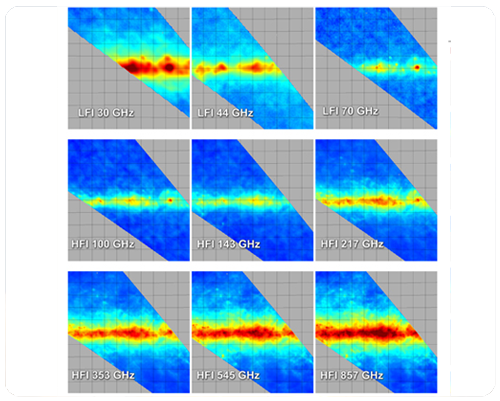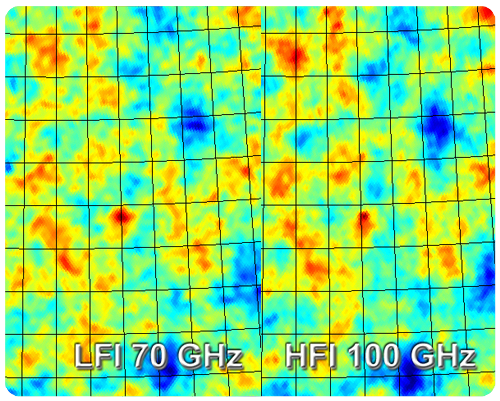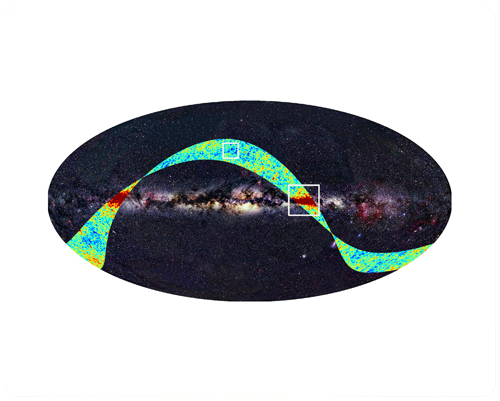
|
The above mosaic of maps zooms in on a small part of the First Light Survey, in which our own Milky Way shines very brightly. The nine panels show a 20°×20° map of the emission imaged by Planck in each of the nine frequencies that it is sensitive to: 30 GHz (top left) to 857 GHz (bottom right). Each strip is slightly offset from the others due to the arrangement of the detectors in the focal plane.
|
At low frequencies electrons in the Milky Way emit radio waves as they interact with gas and the magnetic field; at high frequencies it is dust that radiates heat. At each frequency a different mix of radiation processes contributes to the structure visible in the images; the combination of frequencies provides a rich source of information on the physics of our Milky Way – much of it never available until now.
(Note that each panel is available as a separate image - see Related Images.)
Planck First Light Survey - detail at high galactic latitude

|
This zoom on an approximately 10°×10° region of the Planck First Light Survey where the Milky Way is not the predominant signal shows clearly the features which are of most interest to Planck, i.e. the Cosmic Microwave Background (CMB).
|
In the left and right panels are observations by LFI at 70 GHz and HFI at 100 GHz, respectively. At each of these frequencies the dominant emission is the CMB, and both maps indeed show very similar features. The small visible differences are expected, due to the still imperfect calibration at this early stage of processing, and to remaining low-level galactic emission.
The fact that two completely independent detectors based on different technologies are so quickly able to yield maps of such remarkable similarity is a powerful confirmation of Planck's ability to detect and map the very faint CMB structures arising in the early Universe.
| 
![]()


